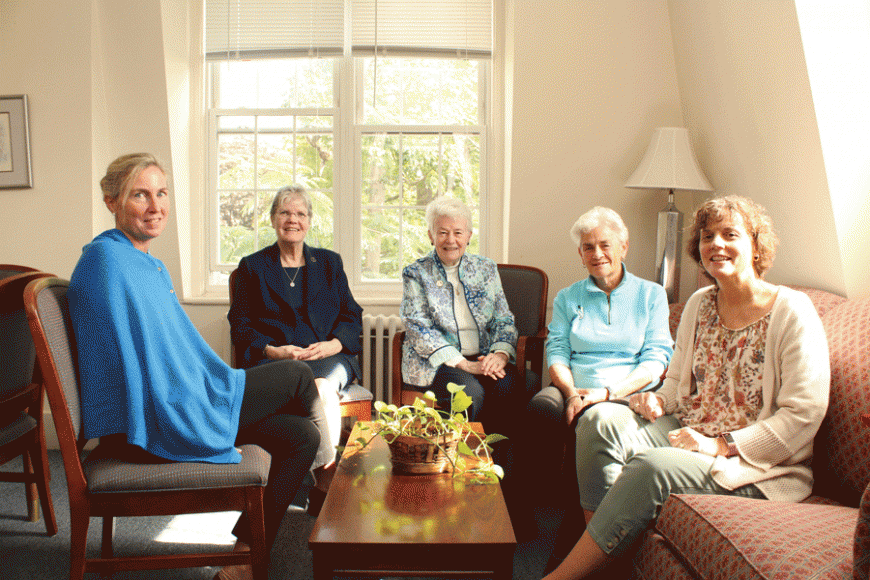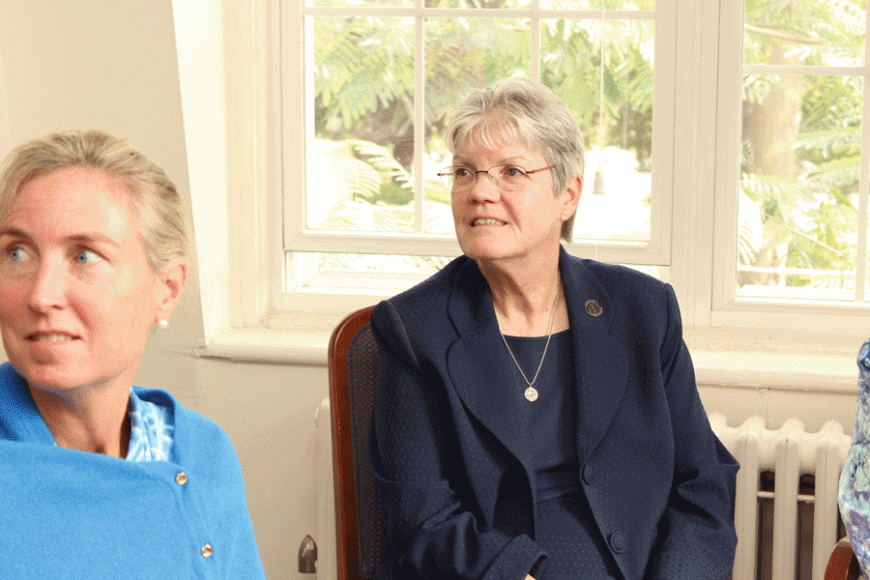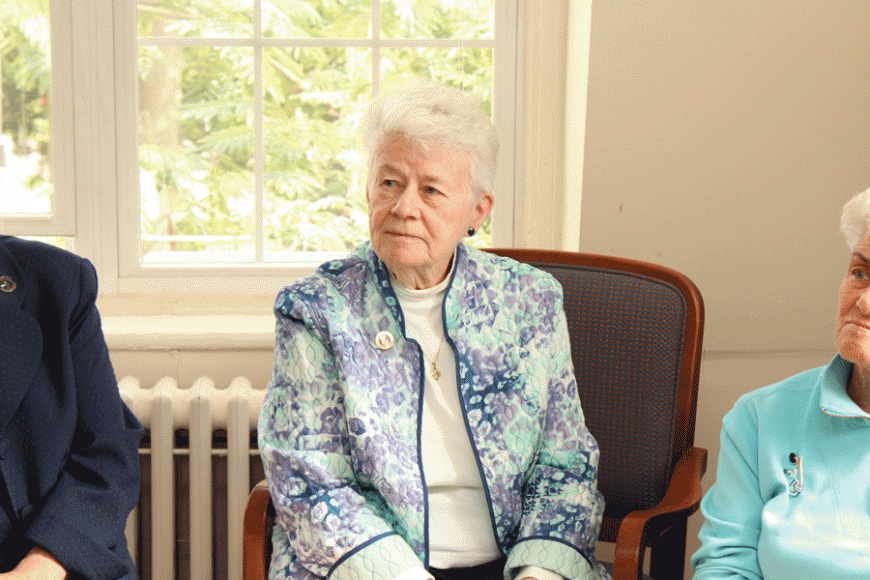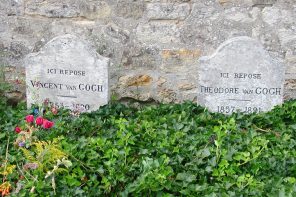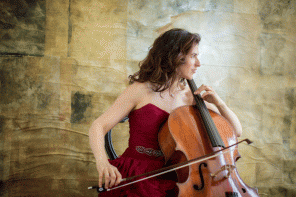The gardener looked briefly askance at me, an unfamiliar presence on a campus that is still an oasis off the impervious hustle and bustle of North Broadway in White Plains. No matter. I was determined to have my “Brideshead Revisited” moment. Like the narrator of Evelyn Waugh’s elegiac novel, Charles Ryder, I had returned to a place that had played a crucial role in my life though I had not been intimately acquainted with it for many years. The Leo I. Kearney Gymnasium where I excelled at nothing but modern dance and the athletic fields beyond where I tried to avoid playing soccer and softball. The high school building still standing tall, like an order of flapjacks, where we put on Molière plays and produced a videotaped French soap opera, “Heartbreak on Lafayette Street”. The stone-crusted chapel where I honed my love of singing. The Spanish Colonial convent where we were sometimes sent as a punishment and where the sympathetic older nuns served us hot chocolate in the plant- and statuary-filled solarium. (Some punishment.)
Mostly, though, I stood before the elementary school that stared back at me like an old friend. I could see myself on the second-floor wraparound porch with seventh-grade classmates, staging a radio play that went awry when a prop malfunctioned, and with fifth-grade classmates peering out of a second-story window at a bemused college girl and police officers, searching for her Volkswagen Beetle, which we had moved from one end of the parking lot to another during recess. (I think that may have required extra punishment at the convent.)
It was as a schoolgirl at the Academy of Our Lady of Good Counsel that I wrote a short story about my grown up self returning to the campus. Now after a half century, it was coming true.
Recounting this later to a friend, I had to pause, overcome with emotions that I hadn’t expected to feel. On the campus, though, there was no time for tears but only a delicious sense of anticipation, as I was on a far more important mission — to assess how the Sisters of the Divine Compassion, who had shaped the woman and writer I have become, were faring amid challenges to the Roman Catholic Church and American society in the 21st century.
What I found is that while their world has, in some ways, contracted — Good Counsel High School closed in 2015, the elementary school in 2017, both for fiscal reasons; and the order numbers 73 nuns from a high of more than 300 — the sisters’ sense of community and mission of service, always the core of the order, has continued and strengthened.
“We’re quietly and not so quietly doing what we have always done,” says Sister Laura Donovan, president of the Sisters of the Divine Compassion and a member of the five-sister leadership team. “We’re an apostolic order, which means we have a contemplative and an active life.”
We are talking in the administrative St. Joseph’s House, a historic Victorian building lined with wildflowers that served as the order’s first convent in White Plains and remains one of two structures, along with the Chapel of the Divine Compassion, whose use the sisters retain now that the 16-acre site has been sold. There on the second floor, Sister Laura has convened an informal round table that includes Sister Jane Keegan, a retiree and volunteer who has worked in education, publishing and fundraising; Sister Felicitas Russell, a Good Counsel High School alumna who serves in the Advancement Office; Sister Carol Peterson, who is on the order’s leadership team and has been an English teacher, a caseworker and a school administrator, including as principal of Good Counsel High School; and Beth O’Keeffe Cleary, a laywoman and alumna of the high school, who is director of congregational advancement for the order.
On the first floor of the building is one of the four missions that the order operates. For 27 years, The RDC Center for Counseling & Human Development has provided licensed, affordable counseling to those whose problems may range from anxiety to divorce to bereavement.
The other three missions are:
The Center of Compassion — a Dover Plains site that includes a food pantry, a thrift shop and a backpack program providing elementary school children participating in the free breakfast and lunch initiatives with nutritious foods for the weekend;
Preston Center of Compassion — offering women, children and families in the Bronx a variety of educational, business and social services, including a Big Sister, Little Sister program; and
Preston High School — a college-preparatory high school for girls, also in the Bronx.
(There’s also the Divine Compassion Spirituality Center online, which offers reflection resources and a lecture series and invites you to join the sisters wherever you are in the world at 6 p.m. Thursdays for 15 to 20 minutes of meditation/centering prayer in whatever faith tradition you practice.)
What these missions demonstrate is a changing world — and a changing sisterhood.
“The sisters used to live in large communities that served large institutions,” Sister Jane says. Now with many in their senior years — the median age is 79 — they live in small, self-sustaining groups or even by themselves, as they strive to fulfill social needs that are more diverse and dispersed. It is this expanding, more peripatetic sense of community, Sister Laura adds, that may be the biggest change for the sisterhood in this era, just as Vatican II (the Second Vatican Council, 1962-65) created bridges to the contemporary world that included, for the nuns, the introduction of a modified habit (1967) and the adoption of lay dress (1973).
Says Sister Carol: “Community to us is not just living in a group.” Like others interviewed for this story, she didn’t set out to be a nun. A product of early Catholic schooling, her education took a secular turn at SUNY Oneonta. Sister Jane, an admirer of Amelia Earhart, dreamed of being a pilot or a civil engineer like her father. Even sports- and STEM-loving Sister Laura, who did want to be a nun, had a twin career goal — to be a Rockette.
Ultimately, all of them felt a longing for something greater that they saw at an early age in the sisterhood’s joy — a word that comes up several times in our conversation.
Growing up in Scarsdale, Sister Felicitas, a nun for 59 years, went from public school to Good Counsel Academy. What she saw there made her sit up and take notice — literally.
“I remember saying to my mother, ‘This woman dresses in a habit and tells me to sit up straight,” Sister Felicitas says. “I saw joy with them, together with a purpose and, of course, a great love of God.”
“They look so happy,” Sister Carol, a sister for 33 years, recalls of the nuns at St. Columbanus School in Cortlandt Manor and Kennedy Catholic High School in Somers.
Sister Jane, a nun for 62 years, remembers her senior-year banquet at Preston High at which the nuns served the graduating class. “Their generosity and self-sacrifice moved me.”
It was that sense of service that moved Sister Laura, a nun for 49 years, when she attended St. Bernard’s School in White Plains.
“The church and the parish were the center of social life,” she says, recalling projects with the underserved in Harlem and Warwick in Orange County. “They drew me in.”
It was the desire to serve that also drew Mother Mary Veronica, who founded the order with Msgr. Thomas Preston in 1886. Like others in this story, she didn’t intend to become a nun. She wasn’t even a Catholic. The daughter of a wealthy Welsh-American merchant, the former Mary Caroline Dannat Starr — whose story is told in Sister Mary Teresa, “The Fruit of His Compassion” (Pageant Press, 1962) — married and had two sons. But increasingly dissatisfied with Protestantism, she sought out religious instruction from Preston and, shortly after her husband’s death, began working with him to improve the lives of Irish immigrant girls in Manhattan.
In 1892, they moved their ministry to the former Tilford Estate in White Plains, where it ultimately grew into a kindergarten through 12th grade program and Good Counsel College — later the College of White Plains and, since 1976, part of Pace University.
Though much has changed, more remains.
“Our mission,” Sister Laura says, “is God’s compassion in the world.”
The Chapel of the Divine Compassion celebrates Sunday Mass at 11:30 a.m. Weddings are still performed there for alumnae. For more, visit divinecompassion.org.

